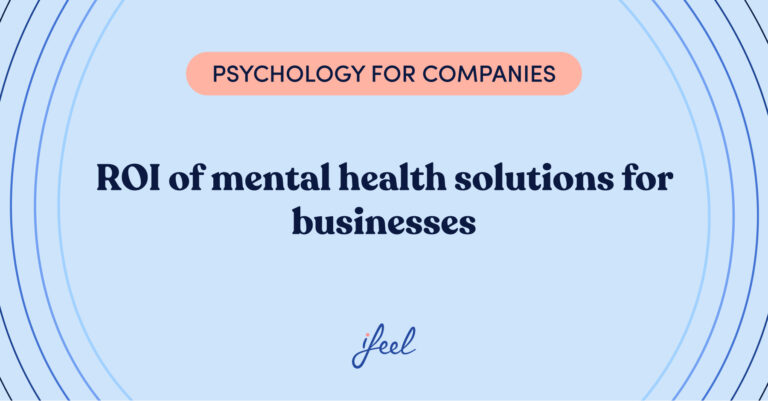Finding the right balance of strengths and weaknesses at work is a challenge for any employee. It is, therefore, an important issue for team managers to pay attention to, especially those responsible for people’s care and management.
What are the strengths and weaknesses at work?
Many characteristics will always be considered qualities or weaknesses regardless of the context. Who would not appreciate intelligence, creativity, or flexibility, for example?
However, as times change, the needs and expectations of employees and employers also change, and it is not always clear what we are talking about when we talk about strengths and weaknesses at work.
Why should we identify our strengths and weaknesses at work?
By maximizing our strengths and addressing our weaknesses at work, we can improve our performance in many areas and prevent stress. This will also boost our mental health as we will feel more confident when facing our tasks.
What are strengths in the workplace?
The discourse on strengths and weaknesses at work is gradually changing. An employee’s strengths would be defined as the qualities that make them a valuable asset, as they are the ones that will enable them to meet the targets that are set and the tasks that are assigned to them. This can include communication skills, leadership, and problem-solving abilities,
Why do strengths and weaknesses at work depend on context?
Every employee is different and therefore has different needs and goals. A manager won’t have the same goals as someone who wants to specialize in an area, as a manager has to have leadership skills, whereas a person who wants to specialize in an area might have to focus on their organizational skills.
Why is it important for your company to provide training?
If an employee wants to enhance their skills in an area they are good at, the company should have the resources to help the employee in order for them to develop professionally. Similarly, if an employee struggles in a certain area of their work, the company should help them by providing them with specific training so they can improve their skills.

What are strengths in the workplace?
An employee’s strengths would be those qualities that make them desirable as a member of the team because they are the ones that will allow them to meet the objectives they set and the tasks they are given.
Unfortunately, in recent years, the approach to these qualities has been straying down an unhealthy path, pointing out professional strengths such as the famous “ability to work under pressure” or “long-term commitment to the company”. Not to mention technical and academic requirements (hard skills) more typical of a superhero than an ordinary employee.
However, the discourse on strengths and weaknesses at work is gradually changing. Some aspects that were once considered valuable are being called into question: why is it considered okay for an employee to be able to withstand “pressure” time and time again? Why does joining a company have to be like promising eternal loyalty in exchange for something unclear?
The importance of context
As mentioned above, contextual aspects must be considered (the historical moment, the political and economic situation, and even fashions and trends within the labor ecosystem). Also, as the sector to which an organization belongs and, of course, the particular characteristics of a given job.
For example, let’s look at a context of economic uncertainty or a growth crisis specific to the moment the company is going through in its life cycle. At such times, one strength of workers may be their ability to make sacrifices, delay rewards, and wait patiently for better times to come. While qualities of this kind always tend to be appreciated, they don’t carry the same weight in the context of greater prosperity and predictability. It will be great to have them, but they will simply be less valued because they are not as necessary.
Similarly, exemplary leadership or excellent communication skills will always be considered a possible employee strength. However, they will not always do so in the same way. While for a team manager who aspires to build a career within their company, these are inexcusable strengths, for a freelancer who performs their tasks without much need for coordination with other colleagues and with a more nomadic -even mercenary- mentality, they will be useful but not as relevant.
Moreover, it is also necessary to reflect not only on what characteristics are strengths and weaknesses at work but also on what use is made of those characteristics. In this sense, good management and people care within a company can ensure employees use their talents for their own and the company’s good efficiently and constructively, if possible, in coherence with their tastes, tasks, and responsibilities. This makes it easier to foster their job satisfaction and employee experience.
What about weaknesses?
It has always been said that knowledge does not take up space, but no one ever adds that it does take up time, money, energy, and, above all, not always with the guarantee that it can be acquired. Simply because not all of us have the same capabilities and, of course, the same interests and professional objectives.
Managers – like other team members – have a significant role to play in discovering, indicating, and stimulating the strengths of a given employee, especially if they are junior, if they have just joined the team, or if they are starting to develop new roles that are not the ones they have been performing until now. This is what we are talking about when we talk about attracting, developing, and retaining talent within the company.
How to focus on strengths and weaknesses at work?
1. Look at your characteristics critically
Celebrate and enjoy your strengths, but don’t beat yourself up about those areas you are less good at. Cultivate a forgiving, kind, and compassionate attitude towards our weaknesses at work and those of others.
2. Make the most of training opportunities
Internal training programs and facilitation of external training through flexible scheduling and financing such training. Equipping employees with tools to identify and invest in their areas of development.
3. Reflect on your particular development strategy
Ask yourself these questions: What qualities am I missing or would like to develop? Are they relevant to my job? What is the correct method to do it? Do I have the right resources? Does the company support me in this process? This can be part of the wellness action plan that I design on my own or, if necessary, with the support of my manager.
4. Seek good references and inspiration
Keep asking yourself questions: What criteria am I using to determine that one of my characteristics is a weakness at work? Is it an adequate criterion, too relaxed, or too harsh? My opinion, that of someone external within the team (my boss, a colleague…) to whom I give credit, what someone told me once upon a time but I never really understood?

We care for emotional well-being in organizations
At ifeel, we believe that one of the best ways to achieve sustainable productivity is to make employees feel good about being part of the team. Among other things, this requires adequate management of their strengths and weaknesses at work.
Our team of psychologists, experts in well-being at work, has created an emotional well-being program for companies that can guide HR managers in this task and help the rest of the company’s members.
With this service, HR managers can receive personalized, data-driven advice on improving the psychological well-being of the teams in their charge. If you are part of the HR department in your organization, we recommend that you try our program now and see how it could help you.
This program offers all employees a complete mental health care service that they can access in different ways depending on their needs. Those who wish to have access to an online therapy service with one of our psychologists specialized in cases like theirs or interact with one of our professionals to receive emotional support in a more specific circumstance that worries them.
Of course, in our Resources section, you can find different materials that will help you with many of your day-to-day functions as part of the HR department. For example, podcasts, HR guides on various topics (e.g., employee experience or how to design a good HR strategy), or Interviews with leading HR executives. In addition, we have a Psychosocial Risk Factors Template, which you can use to comply with the requirements of the Labor Inspectorate.
We hope you found this post on strengths and weaknesses at work interesting. If you would like more information about our emotional well-being program for companies, simply request it, and we will contact your team as soon as possible.







